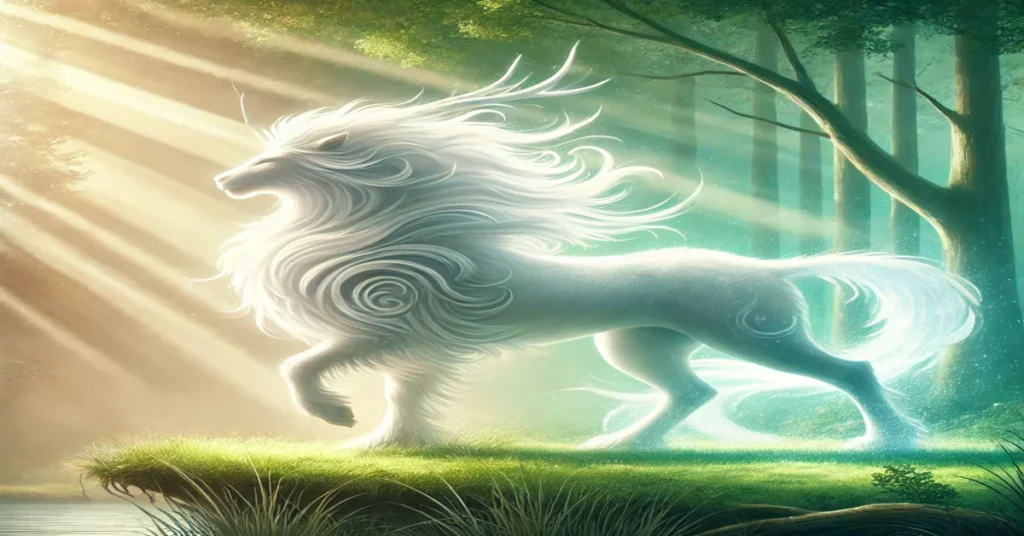The Enigmatic Origins of Blanche Bete
The term “Blanche Bete”, often translated as “White Beast,” has deep roots in European folklore, particularly within the mysticism of medieval societies. It embodies a paradoxical mix of purity and primality, captivating storytellers and audiences for centuries. Its name, combining “blanche” (white) and “bete” (beast), evokes imagery of a creature that is both majestic and untamed.
The Blanche Bete first emerged in medieval French literature, where it symbolized spiritual challenges or moral dilemmas. It was often encountered by knights during their quests, appearing at pivotal moments to test their character and resolve. These encounters were rich in symbolism, blending the creature’s wild essence with its role as a guide toward moral or spiritual awakening.
Historical accounts suggest that the Blanche Bete may have been inspired by tales of rare or mythical animals, revered and feared for their otherworldly qualities. By understanding its historical context, we gain insight into the human fascination with creatures that blur the line between reality and imagination.
Blanche Bete in Folklore and Legend

Throughout European folklore, Blanche Bete has been portrayed as an elusive yet powerful figure. Its depictions vary from one region to another, but its central themes remain consistent: purity, transformation, and the struggle between light and darkness.
In Arthurian legend, Blanche Bete often appeared as a mystical entity. Knights encountering this white beast were forced to confront their innermost fears and desires. One popular story recounts how a knight’s journey to find the Blanche Bete led to self-discovery and redemption, symbolizing the triumph of virtue over vice.
In Scandinavian mythology, they took on a more menacing role, representing the dangers of greed and hubris. These tales depicted the creature as a guardian of sacred lands, warning humans against overstepping their bounds. Whether as an ally or an adversary, the Blanche Bete’s presence in folklore reflects humanity’s enduring curiosity about the unknown.
The Symbolic Depth of Blanche Bete
The enduring appeal of Blanche Bete lies in its rich symbolism. Its “white” aspect is often associated with purity, enlightenment, and spiritual transcendence, while its “beast” nature embodies instinct, raw power, and the untamed forces of nature. Together, these qualities create a metaphor for the duality within every individual.
In religious contexts, It has been likened to angelic beings or divine tests. For instance, in Christian allegory, the creature serves as a reminder of the eternal battle between good and evil within the human soul. Similarly, in Eastern philosophies, the dual nature of the Blanche Bete mirrors the balance of yin and yang.
Psychologically, It resonates with the human condition. It can be interpreted as a symbol of the id and superego—the primal desires and moral compass described by Freud. This reminds us that embracing both our strengths and weaknesses is essential for personal growth.
Modern Interpretations of Blanche Bete

In contemporary culture, It continues to inspire artists, writers, and thinkers. Fantasy novels often feature creatures reminiscent of the Blanche Bete, using its duality to represent the inner conflicts of their protagonists. These modern adaptations emphasize the timelessness of its symbolism, proving that the creature’s themes are as relevant today as they were centuries ago.
It also holds a place in psychology and self-help literature. Motivational speakers frequently invoke the concept of confronting one’s “inner beast” to achieve transformation. By embracing the lessons of Blanche Bete, individuals can overcome challenges and discover their true potential.
Even in the world of design and fashion, the imagery of Blanche Bete is used to evoke themes of transformation and individuality. Its presence in modern media underscores its universal appeal, bridging the gap between ancient myths and contemporary narratives.
The Relevance of Blanche Bete Today
The symbolism of Blanche Bete remains powerful in the modern era. As humanity grapples with issues such as environmental degradation and social upheaval, the serves as a reminder of the importance of balance. Its untamed nature calls for a renewed connection with the natural world, while its purity inspires us to strive for moral and spiritual clarity.
In a personal context, the offers valuable lessons about self-awareness. By confronting our inner fears and embracing the dualities within us, we can achieve growth and harmony. This ancient symbol continues to guide individuals on their journeys of self-discovery, proving its timeless relevance.
Conclusion
The legend of Blanche Bete transcends time, blending themes of purity, primality, and transformation. From its origins in medieval folklore to its modern interpretations, the remains a source of inspiration and introspection. Its dual nature reminds us of the complexities of the human experience, encouraging us to embrace both our strengths and vulnerabilities.
In exploring the rich tapestry of Blanche Bete’s history and symbolism, we uncover lessons that resonate deeply with contemporary audiences. Whether through its role in art, literature, or personal growth, It continues to captivate and inspire, proving that its story is far from over.
Explore more articles by visiting Betwinz.org








